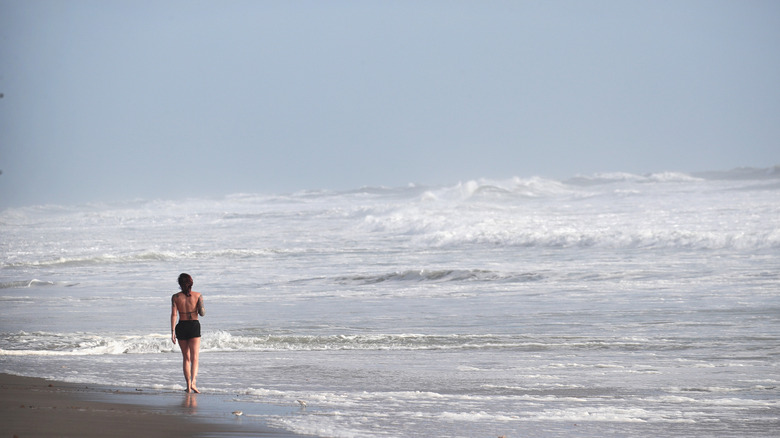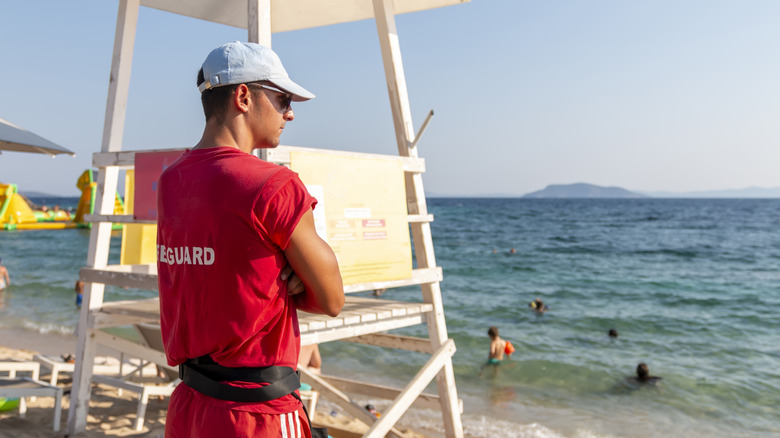
Along Florida's scenic Atlantic coast — between Daytona and West Palm Beach — sits Indialantic Boardwalk, a quiet, palm-lined stretch that's now making headlines for a less relaxing reason. According to research from the tide and weather forecasting group Tideschart (via The Weather Channel), Indialantic was named one of America's most dangerous beaches in 2025, joining a list that includes both high-traffic tourist spots and unexpected hidden risks.
But what makes it so dangerous? It's a combination
of frequent surf-related injuries, strong rip currents, and increased reports of shark activity. While it isn't America's most shark-infested beach — though Brevard County as a whole is particularly notorious in a state that's already known for shark attacks — Indialantic's shark encounters have raised concerns about swimmer safety.
Beyond sharks, another issue is the beach's strong rip currents, which are particularly dangerous for tourists unfamiliar with local surf conditions. Brevard County saw eight people drown due to rip currents on its beaches between November 2024 and the end of May 2025. Many victims are not locals, who might not be used to the Indialantic's strong currents. The Melbourne Beach town manager told Florida Today that these rip currents are "unprecedented." Inadequate and underfunded lifeguard coverage also makes rescues more difficult. Combine that with Florida's increasingly unpredictable 2025 hurricane season — made worse by budget cuts and reduced and underfunded monitoring systems — and it's easy to see why this Florida beach is now among the deadliest in the United States.
Read more: Research Says You Should Skip These Dangerous Beaches When Visiting Florida
How To Stay Safe At Indialantic Boardwalk

Despite the headlines, Indialantic Beach remains a beautiful and popular spot for surfers, locals, and spring break travelers. But that surplus of tourists is also dangerous, as it means the lifeguards are spread thin with a lot of out-of-towners who aren't used to the currents.
If you're planning a visit, the key is to stay aware of surf conditions and follow basic water safety practices. Always swim near lifeguard towers, check local flag warnings, avoid the water during strong surf advisories, and learn how to identify dangerous rip currents and how to survive them if you're pulled out to sea. Experts also recommend wearing reef-safe sunscreen to avoid attracting marine life and being cautious during dawn and dusk — when sharks tend to be most active. The Florida Fish and Wildlife Commission also advises swimmers to stay in groups, avoid wearing glittering jewelry or bright-colored swimsuits, abstain from swimming if you have a bleeding wound, and try not to splash too much unless you're in danger.
According to Fox Weather, Indialantic's ranking among the most dangerous beaches in America stems from cumulative risk factors — not everyday dangers — so with preparation, your visit can be both safe and enjoyable. That's why it's vital to check safety updates before you go, especially during hurricane season. Whether you're a surfer, sunbather, or storm-watcher, this Florida beach is a reminder that natural beauty often comes with hidden risks — but with caution, it's still worth the trip.
Ready to discover more hidden gems and expert travel tips? Subscribe to our free newsletter for access to the world's best-kept travel secrets.
Read the original article on Islands.













